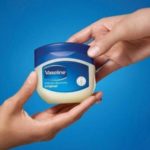Humidifiers not only help reduce the dryness and heat in your home, but they also offer benefits for your skin and respiratory system. Read on to learn more about this useful device.
1 What is a Humidifier?
 Humidifier
Humidifier
A humidifier is a device that adds moisture to the air in spaces with low humidity, such as air-conditioned rooms or during hot and dry weather. When the air’s humidity reaches an optimal level, it becomes more comfortable and beneficial for your skin and respiratory system.
2 Types of Humidifiers
There are several types of humidifiers available today, each with unique operating mechanisms and designs:
 Vaporizer Humidifier
Vaporizer Humidifier
Vaporizer Humidifier: This type of humidifier uses a fan to blow water vapor through filters and disperse it into the air. While it is affordable, the excessive dispersion of moisture can lead to mold growth and respiratory issues, especially for individuals with asthma.
 Impeller Humidifier
Impeller Humidifier
Impeller Humidifier: This type of humidifier uses high-speed rotating discs to create a cool mist. While it may cause discomfort for individuals with allergies and asthma, it is generally considered safe for children as it does not produce hot steam that could cause burns.
Steam Vaporizer: This type of humidifier uses electricity to heat water and release warm moisture into the air. Due to the production of hot steam, it may not be the best option for homes with children.
 Ultrasonic Humidifier
Ultrasonic Humidifier
Ultrasonic Humidifier: This is a popular choice due to its use of ultrasonic vibrations to create a cool mist. It offers adjustable settings for temperature and is considered safe and user-friendly, especially for children.
However, it is important to note that individuals with allergies, children, and those with asthma should carefully consider the use of humidifiers due to potential adverse effects associated with excessive moisture.
3 Benefits of Humidifiers
 Humidifier Balancing Indoor Humidity
Humidifier Balancing Indoor Humidity
According to health experts, the ideal humidity level for adults is between 55-65%, while for infants and children, it is recommended to maintain a humidity level between 40-60% at a room temperature of 26ºC. These conditions promote a comfortable environment, prevent dehydration, enhance metabolic processes, and improve mental clarity.
However, when the air is too dry or too humid, it can negatively impact your mood, skin, and respiratory system. A humidifier can help alleviate these issues by providing the following benefits:
Preventing Flu
 Humidifier Helps Prevent Flu
Humidifier Helps Prevent Flu
Research suggests that maintaining a humidity level above 40% can inhibit the activity of flu viruses, thereby reducing the risk of infection and contributing to treatment.
Thinning Mucus
Dry air can lead to a buildup of thick mucus, causing a persistent cough and irritation in the throat. Balanced humidity helps loosen mucus and makes it easier to expel.
Reducing Snoring
Dry air can irritate the respiratory system and contribute to snoring. A humidifier can help alleviate this issue by adding moisture to the air.
Moisturizing Skin, Lips, and Hair
 Humidifier Moisturizes Skin, Lips, and Hair
Humidifier Moisturizes Skin, Lips, and Hair
Dry air can lead to cracked skin, chapped lips, and dull, brittle hair. A humidifier helps counteract these issues by adding moisture to the air, benefiting your skin and hair.
Alleviating Allergies and Asthma
 Humidifier Reduces Allergies and Asthma Symptoms
Humidifier Reduces Allergies and Asthma Symptoms
Using a humidifier can help alleviate symptoms of allergies and asthma by moisturizing the sinuses and respiratory tract, especially during seasonal changes.
Unwanted Effects
 Improper Use of Humidifier Can Cause Adverse Effects
Improper Use of Humidifier Can Cause Adverse Effects
While humidifiers offer numerous benefits, they can also have unwanted effects if not used properly:
Bacterial Growth: If not cleaned regularly, humidifiers can become a breeding ground for bacteria, leading to the spread of bacteria and viruses in the air.
Excessive Humidity: Too much moisture in the air can aggravate respiratory issues, especially for individuals with allergies and asthma. It can also promote the growth of mold and mildew on walls and ceilings.
4 How to Use a Humidifier for Optimal Health Benefits
 Regularly Clean Your Humidifier
Regularly Clean Your Humidifier
To ensure safe and effective use of a humidifier, especially in households with individuals sensitive to air quality or asthma, follow these steps:
Firstly, remove and clean the water tank to eliminate any built-up dirt. Then, fill the tank with distilled or purified water, ensuring you use the correct amount as indicated on the tank.
If desired, install an additional filter, plug in the device, and adjust the settings according to your needs. Finally, turn off and unplug the humidifier after each use.
5 Important Considerations When Using a Humidifier
 Replace Filters as Directed
Replace Filters as Directed
Here are some essential tips to keep in mind when using a humidifier:
Maintain Distance: Avoid sitting too close to the humidifier.
Regular Cleaning: Clean the device and change the water frequently. Use only distilled or purified water.
Filter Replacement: Replace the filter as directed by the manufacturer.
Placement: Place the humidifier on a flat, elevated surface, away from walls and absorbent materials like books, clothing, or curtains.
Manufacturer’s Instructions: Follow the usage guidelines provided by the manufacturer, especially regarding safety precautions when using the device around children.
Monitor Humidity Levels: Keep an eye on the humidity levels in the room and adjust the settings if they get too high.
The information provided above offers insights into the benefits and proper use of humidifiers. It is important to consider your specific needs and choose a suitable humidifier accordingly.







































